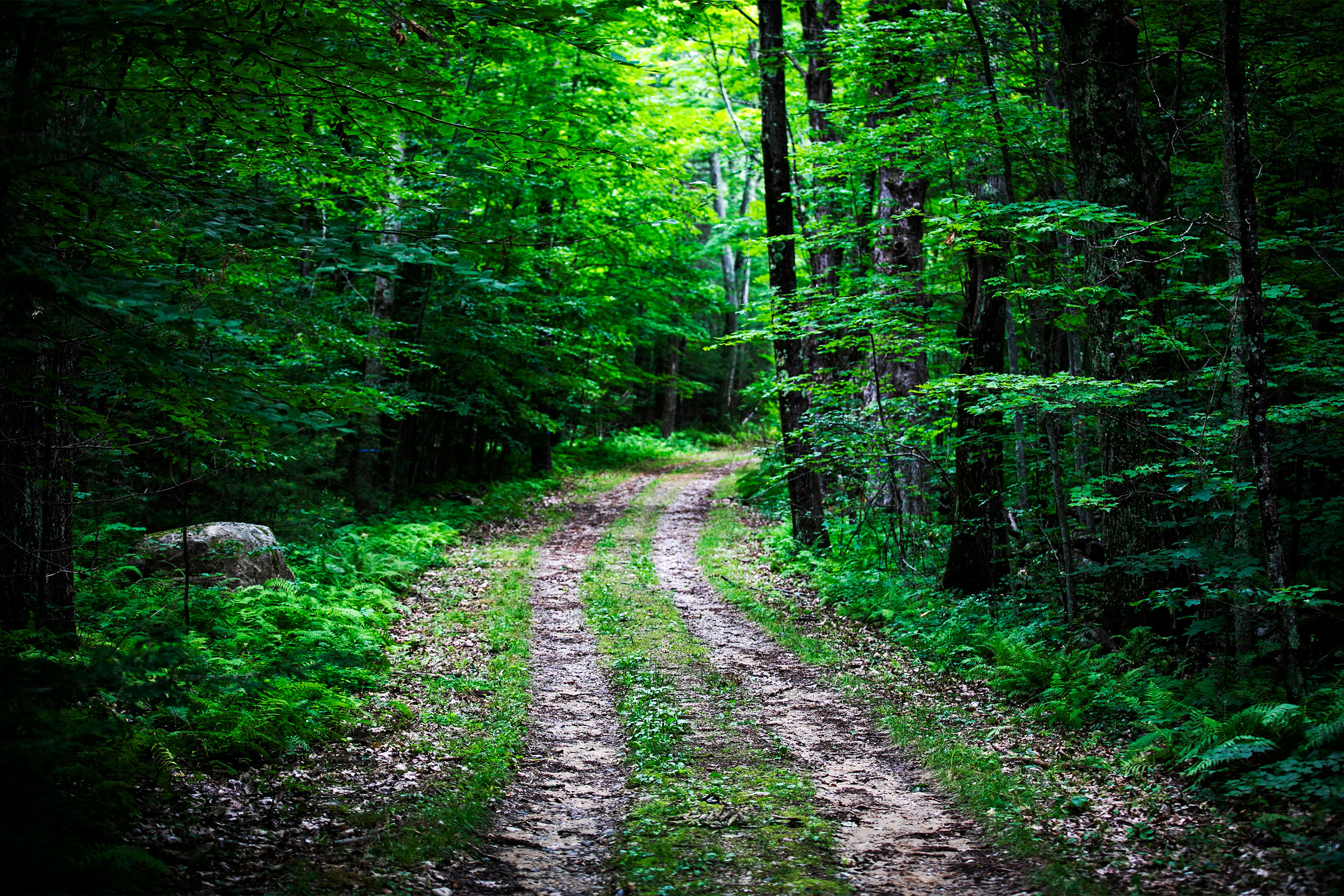Harvard Forest climate change is at the forefront of groundbreaking research exploring the profound impacts of our warming climate on forest ecosystems. Nestled in Petersham, Massachusetts, this unique research facility provides invaluable insights into climate change research, documenting shifts in habitats over decades. As temperatures rise and weather patterns evolve, Harvard Forest studies the visible consequences, such as the prevalence of invasive species and changes in species composition. The ongoing research demonstrates the intricate relationships within forest ecosystems, illustrating just how much climate change alters natural dynamics. These findings highlight the urgent need to understand the impact of climate change on our environment and its implications for future generations.
The investigation into climate variability at Harvard Forest, a key site for ecological research, manages to shed light on the ongoing transformations within our planet’s woodlands. This critical location facilitates studies that reveal the substantial effects of a warming globe on forest habitats, drawing attention to shifts in biodiversity and the growing challenge presented by invasive pests. Researchers at this center engage in exploring the intricate interplay of environmental factors that contribute to ecosystem changes, fostering a deeper comprehension of how climatic alterations influence forest health. This platform serves not only as a scientific endeavor but also highlights the importance of understanding and adapting to the evolving narrative of our planet’s climate narrative.
Understanding Climate Change Through Harvard Forest Research
Harvard Forest serves as a crucial laboratory for understanding the impacts of climate change on forest ecosystems. Researchers at Harvard Forest, including senior investigator Emery Boose and director Clarisse Hart, are diligently studying how these changes manifest in their surroundings. Over the years, extensive climate change research conducted in this 4,000-acre forest has revealed significant transformations in the landscape, indicative of the warming climate. From altered tree compositions to shifts in soil chemistry, every element of the forest ecosystem has been affected by climatic variations, which are meticulously documented to provide a clear picture of the ongoing trends.
The meticulous data collection initiated at Harvard Forest dates back to the 1960s, compounded by historical records from nearby Amherst that extend even further. This wealth of information enables scientists to identify climate trends that inform our understanding of the long-term impacts of climate change. For instance, researchers have noted the thriving populations of black birch replacing the declining hemlocks—a clear indicator of the forest’s adaptive response to climate pressures. Such findings are critical as they not only highlight ecosystem changes but also enhance our knowledge of how different species interact in a warming climate.
Impact of Climate Change on Forest Ecosystems
The impact of climate change on forest ecosystems is profound, as illustrated by the ongoing changes at Harvard Forest. Researchers have observed a significant increase in temperature and precipitation, leading to a rise in extreme weather events such as short-duration heavy rainfall during summer. This shift in climate patterns is not merely an observation; it has tangible consequences on the forest’s flora and fauna. Ecologists emphasize the importance of understanding these dynamics as they influence the very essence of the ecosystem, altering species interactions, nutrient cycles, and habitat availability for various organisms.
For example, the emergence of invasive species such as the woolly adelgid, which thrives in milder winters, poses a serious threat to native hemlocks. This pest has decimated populations of this critical tree species, which plays an essential role in maintaining the forest’s structure and function. The gradual loss of hemlocks not only disrupts the balance of the ecosystem but also changes the understory dynamics, allowing different species to colonize the area, thereby transforming the landscape. Researchers continually monitor these changes to gain insights into adaptive management strategies required in the face of climate change.
The Resilience of Forests Amid Climate Change
Despite the challenges posed by climate change, forests exhibit remarkable resilience. At Harvard Forest, scientists, including David Orwig, are documenting how the ecosystem is adapting to new climatic realities. While the decline of hemlocks may seem dire, their replacement by more resilient species like black birch reflects the forest’s capacity to recover and change. This adaptability is essential for maintaining biodiversity and ecosystem services, such as carbon sequestration and water regulation, amid warming climate effects. By embracing a perspective that views these changes as part of a natural cycle rather than merely losses, scientists can better appreciate the complexities of forest dynamics under climate pressure.
Moreover, this resilience is not just about surviving; it also involves transformation. The growth of new tree species that thrive in warmer conditions suggests that forests are evolving. Research indicates that transitional species might eventually lead to ecosystems that are not only different but potentially more resilient to future climate changes. As scholars continue to explore these adaptive mechanisms, the studies conducted at Harvard Forest become integral to understanding how forest ecosystems function and thrive in an increasingly unpredictable environment.
Harvard Forest Studies: A Model for Climate Change Research
Harvard Forest studies have emerged as a leading model for climate change research, offering valuable insights into the long-term effects of climatic shifts on forest ecosystems. The interdisciplinary approach taken by researchers encompasses various aspects of environmental science, including ecology, forestry, and atmospheric science. This collaborative effort allows for a comprehensive understanding of the interplay between biological systems and environmental factors, resulting in a richer dataset that informs broader climate discussions. As researchers continue to examine the data, they can make predictions that are essential for conservation efforts and natural resource management.
In addition, the long-term nature of the studies being conducted at Harvard Forest ensures that researchers can track changes over decades. Such longitudinal studies are rare yet crucial in climate change research, as they provide insights into slow-moving trends and catastrophic shifts. The forest’s unique position and historical data serve as a benchmark for other regions facing similar climatic challenges, emphasizing the urgency of action in the realm of environmental conservation and restoration. Harvard Forest’s importance in the scientific community cannot be overstated, as it plays a pivotal role in shaping our understanding of global climate dynamics.
Warming Climate Effects Documented at Harvard Forest
The warming climate effects experienced at Harvard Forest offer a vivid illustration of broader climatic shifts anticipated in many forested areas. Data collected over the years reveals notable changes in temperature, which in turn influence seasonal growth patterns, species distribution, and overall forest health. Observations indicate that winters are arriving later and are milder, while summers are becoming hotter and wetter. This combination disrupts the natural cycles essential for many flora and fauna, posing challenges for species that are ill-prepared for rapid changes in their environment.
As researchers document these warming climate effects, they emphasize the importance of creating adaptive management strategies to mitigate the consequences. This includes monitoring invasive species, understanding their ecological impacts, and developing strategies for promoting biodiversity. Engaging the community through outreach programs also serves as a vital tool in raising awareness about the significance of conservation efforts necessary for combating climate change. The work being done at Harvard Forest serves as both a cautionary tale and a beacon of hope, illustrating the intriguing interplay of resilience and vulnerability inherent in our forests.
Community Engagement in Climate Change Awareness
Community engagement plays a crucial role in promoting awareness about climate change, especially in localized settings like the Harvard Forest. Researchers and educators actively involve local communities in their work, sharing findings about ongoing changes and fostering a sense of stewardship for the ecosystem. Through programs designed for schools, nature walks, and community events, residents learn about the significance of their environment and the impacts of climate change on their local forests. This educational approach not only deepens community knowledge but also encourages proactive measures to protect their natural heritage.
Furthermore, personal stories from those who have witnessed changes over decades add a relatable dimension to the scientific discourse. As locals, including faculty and researchers at Harvard Forest, share their experiences with the community, they foster a collective acknowledgment of the challenges posed by climate change and how they affect daily lives. This narrative creates a bridge between scientific research and community action, leading to increased participation in conservation efforts and sustainability practices. Such grassroots engagement is essential for building a resilient community ready to face the impacts of climate change together.
Long-Term Observations Reveal Significant Ecosystem Shifts
Long-term observations of the Harvard Forest ecosystem have provided invaluable insights into the significant shifts brought about by climate change. By systematically collecting data on temperature, precipitation, and biological responses over the decades, researchers can identify patterns that reveal how the forest is adapting to changing conditions. The ongoing studies elucidate the interplay between warming temperatures and the increasing frequency of severe weather events, highlighting a trend towards unpredictability that challenges traditional understandings of forest ecosystems.
These observations underscore the necessity for ongoing research that can keep pace with rapid environmental changes. As forests serve as critical carbon sinks, understanding how they respond to climate change is essential for global climate strategies. The data compiled at Harvard Forest not only reflect local conditions but can also inform global climate models, helping to predict future scenarios in forest dynamics across different regions. This research holds great promise for improving our understanding of climate impacts and informing actions needed to protect forest ecosystems in a warming world.
The Role of Technology in Climate Change Research
The integration of technology in climate change research at Harvard Forest marks a significant advancement in how we understand the environmental impact of shifting climatic patterns. Cutting-edge instruments that monitor various environmental parameters, such as gas exchange between the forest and the atmosphere, provide researchers with real-time data essential for robust analysis. By employing technologies such as remote sensing and soil sensors, scientists can gather data that enhances our understanding of ecological changes, facilitating a more precise response to the challenges posed by climate change.
Moreover, technology aids in visualizing data and conveying complex information to the public and stakeholders. Through innovative platforms, researchers can share their findings with a broader audience, enhancing awareness of climate issues and the importance of ecosystems like Harvard Forest. Such advancements not only bolster research efforts but also empower communities to engage more deeply with environmental stewardship, emphasizing the need for collaborative action in the face of climate change.
Mitigating Climate Change Impacts at Harvard Forest
Mitigating climate change impacts at Harvard Forest involves a multifaceted approach that combines research, community engagement, and strategic management. By understanding the specific threats posed to local ecosystems, researchers work to develop intervention strategies that promote resilience among plant and animal species. These efforts include monitoring the populations of hemlocks and other vulnerable species, implementing pest management practices, and exploring reforestation initiatives that support biodiversity.
Additionally, fostering a deep understanding of the interconnectedness of climate systems emphasizes the shared responsibility individuals have in combating climate change. Collaborative initiatives within the Harvard Forest community, including workshops and educational programs, help raise awareness of proactive solutions that can minimize environmental damage. By empowering individuals to adopt sustainable practices within their daily lives, the region can cultivate an ethos of conservation that contributes to long-term biodiversity preservation and climate change mitigation.
Frequently Asked Questions
What are the main findings of the Harvard Forest climate change research?
Harvard Forest climate change research has revealed clear trends of a warming and wetter climate, corroborated by historical data on temperature and precipitation. Researchers, such as Emery Boose, emphasize long-term data collection, indicating increasing variability in weather patterns, including more frequent heavy rainfall events and declining snowpack during winters.
How is the forest ecosystem changing due to climate change at Harvard Forest?
Climate change is causing significant shifts in the forest ecosystem at Harvard Forest. Prominent species like hemlocks are declining due to invasive pests like the woolly adelgid, while new species such as black birches thrive. These changes alter soil chemistry and nutrient flow, impacting the forest’s overall health and biodiversity.
What impact does climate change have on the flora and fauna of Harvard Forest?
The impacts of climate change on the flora and fauna of Harvard Forest are profound. The changing climate permits invasive species to flourish while native species decline. Changes in temperature and precipitation patterns affect animal habitats and behaviors, further complicating the dynamics of this crucial forest ecosystem.
How does Harvard Forest studies contribute to understanding climate change?
Harvard Forest studies contribute significantly to understanding climate change by providing invaluable long-term datasets and ongoing research projects. The forest serves as a living laboratory where scientists investigate the effects of a warming climate, adapt research methodologies, and explore new ways to mitigate and adapt to these environmental changes.
What role does climate change play in the future of Harvard Forest’s ecosystem?
Climate change plays a critical role in shaping the future of Harvard Forest’s ecosystem. As observed by researchers, the ongoing climatic shifts dictate species composition, forest structure, and ecological interactions, raising concerns about the resilience of traditional species and the potential for irreversible ecological changes.
What are the specific climate trends observed at Harvard Forest?
Specific climate trends observed at Harvard Forest include rising temperatures, increasing precipitation, and noticeable shifts in seasonal patterns, such as delayed winter snows and earlier springs. These long-term changes reflect predictions made by climate scientists about regional climate impacts.
How does Harvard Forest combat the effects of climate change?
Harvard Forest combats the effects of climate change through comprehensive research initiatives that monitor ecosystem changes, advocate for biodiversity conservation, and explore innovative management practices aimed at enhancing the resilience of forest ecosystems amid ongoing climate challenges.
What adaptations are visible in the species at Harvard Forest due to climate change?
Visible adaptations in species at Harvard Forest due to climate change include the decline of hemlocks and the rise of black birches, as these species demonstrate different responses to changes in temperature and soil conditions. This shift reflects broader ecological adjustments as species compete for limited resources in a changing environment.
How do changes in Harvard Forest illustrate the broader impacts of climate change?
Changes at Harvard Forest illustrate the broader impacts of climate change by providing a microcosm of how ecosystems respond to warming temperatures, invasive species, and changing precipitation patterns, showing that these shifts are not isolated but part of a global phenomenon affecting temperate forests everywhere.
| Key Points | Details |
|---|---|
| Harvard Forest and Climate Change | Harvard Forest, a 4,000-acre research site in Massachusetts, serves as a key location for studying the effects of climate change. |
| Transformations Observed | Significant changes observed in the ecosystem, including a shift from hemlocks to black birches, and changes in the understory and microclimate. |
| Importance of Long-Term Data | Long-term climate data from the forest dating back to the 1960s allows scientists to track climate trends amidst yearly weather variations. |
| Research and Experiments | Around 100 ongoing research projects focused on a range of climate-related topics, studying effects of temperature and rainfall on forest ecology. |
| Impact of Invasive Species | The woolly adelgid has dramatically affected hemlocks in the forest, pushing a shift toward birch trees as a result of climate changes. |
| Resilience of Ecosystems | Despite significant changes and threats, ecosystems demonstrate remarkable resilience in adapting to new conditions. |
| Future Generations’ Perspective | The concept of ‘shifting baselines’ highlights how future generations may not understand the past state of these ecosystems. |
Summary
Harvard Forest climate change effects are a poignant reflection of how increasing temperatures and invasive species alter local ecosystems. The research conducted at this historic site underscores the critical realities of climate change, revealing the forest’s transformation from its lush hemlock-dominated landscape to one where black birches now thrive. As scientists document these changes, the importance of preserving this natural laboratory becomes even more evident, not just for current study but for the sake of future generations who may not recognize the unique characteristics of old-growth forests. Understanding this transformation is essential for developing effective conservation strategies and ensuring the legacy of Harvard Forest for years to come.









